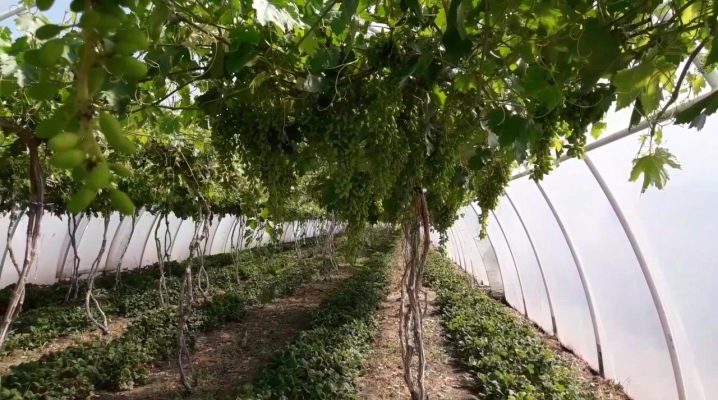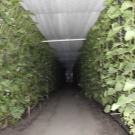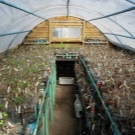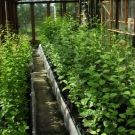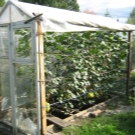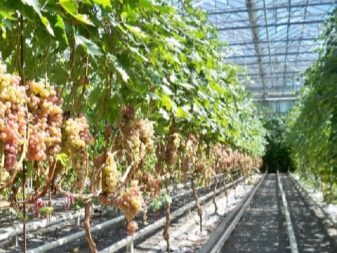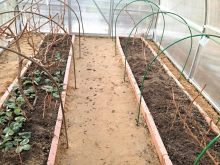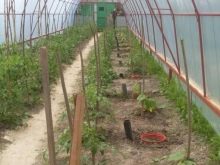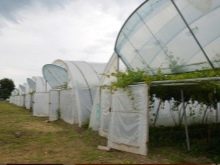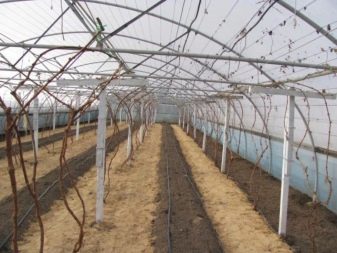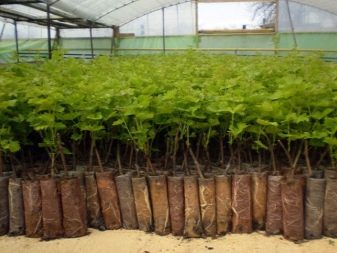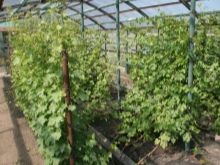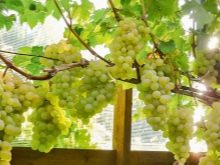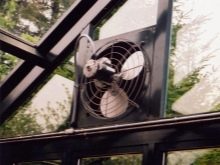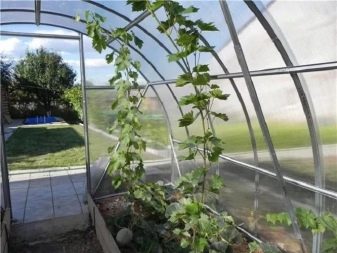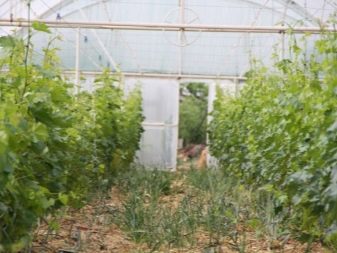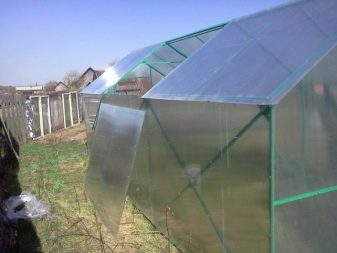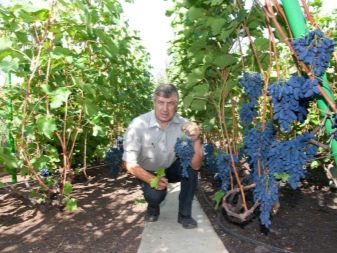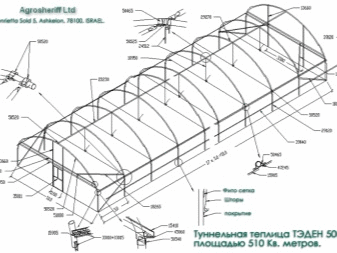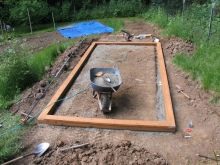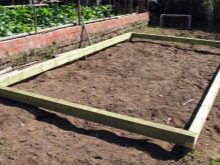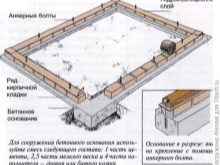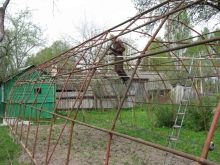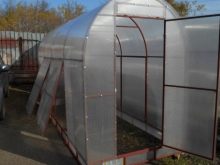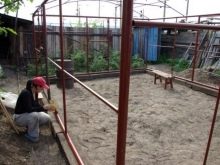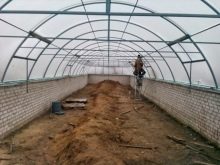Greenhouse for grapes: types and their features
Not in all regions climatic conditions allow growing grapes in the garden plot. However, this culture is quite possible to grow in specially equipped greenhouses.
Advantages and disadvantages of greenhouse cultivation
In the greenhouses are grown not only those grapes that are not adapted to the climatic conditions in the region. Unpretentious plant species are also often planted in specially prepared structures.
The greenhouse cultivation of grapes has such significant advantages as:
- vineyards are protected from adverse weather conditions;
- plants grown in the greenhouse, give more yield;
- rapid ripening of berries;
- minimal risk of grape disease. Plants growing in the open field are sick more often;
- easy to care for the vineyard;
- protection against harmful insects;
- even those varieties of grapes that are not suitable for seedlings in the region in open ground can be grown in greenhouses;
- the vineyard does not need to be treated with chemicals, which allows you to get an environmentally friendly harvest of berries.
The disadvantages of greenhouse cultivation primarily include the cash costs for the purchase or manufacture of the desired structure. In addition, grapes growing in the greenhouse can overheat and be damaged in a hot period of time, especially if the structure is not equipped with an automatic ventilation system.
Design features
Designs for growing grapes, have some features. First of all it concerns the size of the greenhouse. The height of the building must be at least two and a half meters. The total area of the greenhouse must be at least twenty-five square meters. Under the greenhouse for grapes be sure to lay the foundation to protect the plant from freezing. A solid foundation will also protect the structure from the entry of harmful insects and weeds.
Cellular polycarbonate is most often used as a covering material for greenhouses. This material is well transmits light and has good thermal insulation characteristics.
For unheated greenhouses, you can use a covering polyethylene film. For the cultivation of grapes requires a strong and durable design, as the plant may not bear fruit in the first year. The strong framework of a design is necessary for its long operation. The frame can be made of galvanized or profiled pipes.
For the cultivation of thermophilic grape varieties, the greenhouse must be equipped with heating. Infrared lamps can be used as heaters. The devices are suspended in the ceiling area. When using such devices, the structural frame will need to be well strengthened. An alternative would be a special heating cable laid under the ground. Some grapes require a lot of light. In the northern regions of the lack of sunlight can be compensated by lighting devices. The most commonly used fluorescent fluorescent lamps.
In the greenhouse it is also necessary to create good ventilation to maintain the microclimate. In order for the building to be aired automatically, it is recommended to equip the greenhouse windows with hydraulic cylinders. This device responds to changes in air temperature inside the greenhouse. When the temperature in the greenhouse rises, the device opens the vents, when the temperature decreases - it closes them. It is recommended to use drip irrigation as an irrigation system. The grapes do not require frequent watering. Automatic systems greatly facilitate the care of plants and provide the necessary amount of moisture.
Species
For growing grapes, you can buy a finished greenhouse or make it yourself. To select the appropriate type of structure, it is necessary to take into account some peculiarities of growing vineyards.
According to the type of covering material, greenhouses for grapes are divided into two types.
- Polyethylene film. Such material is the cheapest option for covering greenhouses. However, the film does not have a long service life and is only suitable for growing grapes of insensitive varieties.
- Cellular polycarbonate. The strength of this material is two hundred times the strength of glass. Polycarbonate construction is reliably protected from precipitation and strong wind. In addition, the material is characterized by good transparency and long service life. Polycarbonate greenhouses are the most suitable option for growing grapes.
Equally important for vineyards is the shape of the structure.
The most suitable options for grapes are two types of greenhouses.
- The design of a rectangular shape with a double slope roof. Such a construction provides a good level of lighting for plants. The shape of the greenhouse allows you to create the optimal height of the structure for growing vineyards.
- The building is in the form of an arch. This type of greenhouses is characterized by low cost and ease of assembly. This design is inferior in some parameters to rectangular greenhouses, but is also suitable for planting vineyards.
Some gardeners recommend using a removable top for growing grapes.
This option allows you to protect plants from freezing in the winter time. After removing the roof, the access to precipitation in the form of snow inside the building opens. Thus, the soil is saturated with moisture, and a layer of snow protects the root system of the vineyard from freezing.
How to do it yourself?
Knowing the features of greenhouses for grapes, you can make a suitable design yourself. This approach, in contrast to the acquisition of ready-made options, will allow you to create the most convenient construction and equip it in the right way.
Structural Design
When designing a future building, it is necessary to determine the size and shape of the structure, as well as the materials from which the basic elements of the greenhouse will be made. The area of construction depends on the amount of grapes to be planted. The recommended height of the greenhouse is two and a half meters. However, for some grape varieties suitable and lower designs.
For the construction of an arched polycarbonate structure, the size of straight walls can be 4.2 x1.5 m. The height of the greenhouse in a particular case will be 1.5 m. The width of the building will depend on the roof slope. In addition to the arched forms for grapes, rectangular works well.dual roof construction. This option can be assembled from wooden beams and hundredth polycarbonate.
Foundation
Before the construction of the greenhouse is recommended to build a foundation. The most common option is shallow tape foundation. The disadvantage of this solution is a high probability of a bad influence on the root system of the vineyard. The foundation of concrete can limit the growth of the roots of the plant in breadth.
Alternatively, you can use the corners of a metal about a meter in length.
At the bottom of the corners, small thick iron plates are welded. For a large greenhouse, 14 such support pins may be required for placement along the perimeter and about 7 for a central installation.
Frame
For the construction of the frame suitable materials such as metal or wood. Working with wooden beams is much easier, because it does not require welding. However, this material is inferior in many characteristics to the metal. The best option is considered to be a frame of galvanized profile. As fasteners, you can use screws, metal rivets or bolts.If you have experience with a welding machine, then the design will be much easier to weld by welding.
Installation
The first is the assembly of the frame of the future greenhouse. Galvanized profile is cut to the elements of the desired length. The frame is assembled or welded from components. To mount polycarbonate sheets on the frame, you must install special rubber inserts. Sheets are installed polycarbonate sheets. In the joints with metal screws fasten metal plates.
For tightness of the structure, all seams are recommended to be sealed with sealant.
In the video below you will learn two ways of growing in a grape greenhouse.
